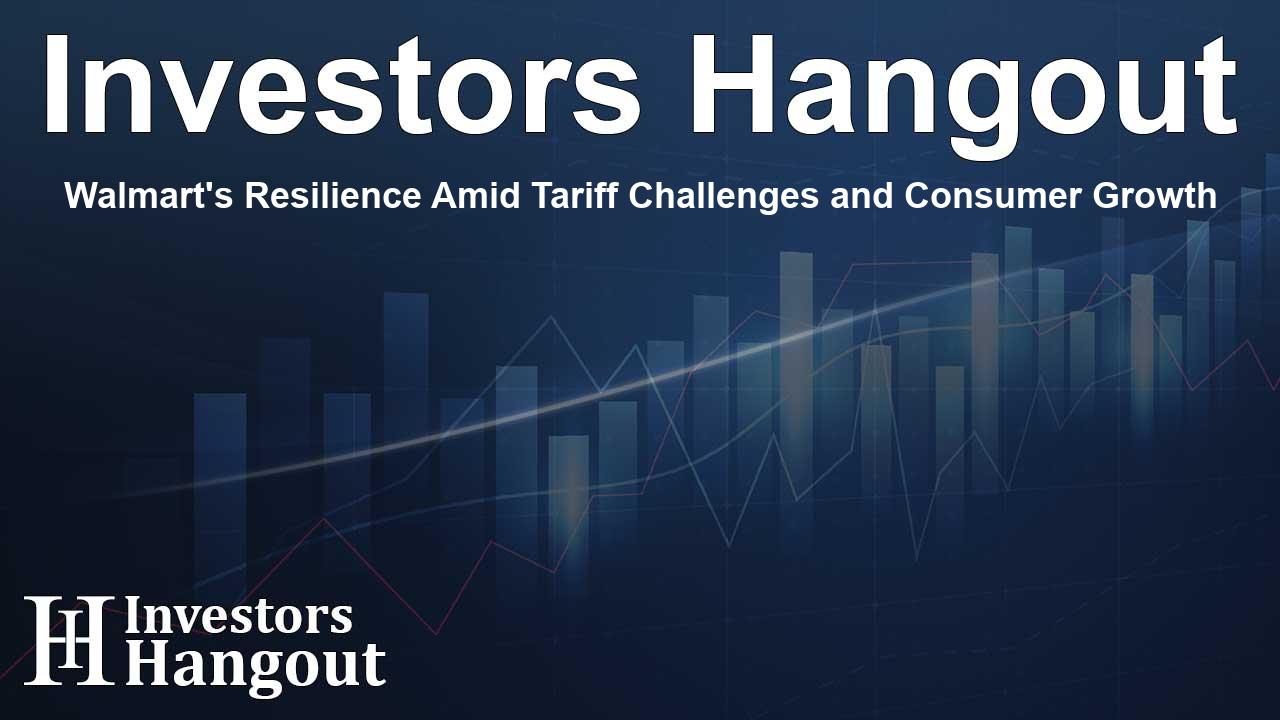Walmart's Resilience Amid Tariff Challenges and Consumer Growth

Understanding Walmart's Market Position Amid Tariffs
Walmart's (NYSE: WMT) recent price adjustments highlight a potential opportunity for long-term investors. Despite challenges posed by tariff uncertainties and slowing growth, Walmart's outlook for earnings, cash flow, and capital return remains promising. The core strength of Walmart lies in its ability to manage supply chains effectively while providing exceptional value to customers.
The tariff environment is complex but not unfamiliar to Walmart. The retailer has been adjusting its strategies since the onset of tariff discussions during the previous administration. With less than 35% of its product sourcing from international markets, Walmart has positioned itself to mitigate the effects of new tariffs. This strategic sourcing, along with an emphasis on private labels, allows it to remain competitive.
Walmart's Strong Financial Performance in Fourth Quarter
The retailer reported a solid FQ4 2025/CQ4 2024, bringing in revenue totaling $180.6 billion, marking a 4.1% increase and surpassing market expectations. The robust performance was driven primarily by strength in the core U.S. market, where sales increased by 5% alongside positive trends in ticket counts and sizes. Additionally, Sam's Club showcased impressive numbers with a notable 13% boost in membership income.
Walmart's operational efficiency is further evidenced by its improved gross and operating margins, while the adjusted EPS soared to $0.66, an increase that is nearly double the revenue growth. The forecast anticipates continued strength as the company moves forward into the next fiscal year.
Walmart's Guidance and Consumer Trends
Despite the strong past performance, Walmart's guidance for future revenue growth appears cautious, projecting a 3% to 4% rise, slightly below analyst expectations of 4.2%. This conservative approach stems from ongoing assessments of the labor market and retail sales data. Current statistics reveal sustained job growth, dropping unemployment rates, and a notable increase in wages, suggesting a continued rise in retail spending.
As we look into the potential for growth in fiscal 2026, expectations are set for these positive consumer trends to not only persist but also accelerate, potentially bolstered by favorable economic policies.
Walmart's Sustainable Capital Return Strategy
A key component of Walmart's investment appeal lies in its capital return strategy. Though dividends and buybacks are modest, they jointly represent an annualized return exceeding 1% with stock prices hovering around $100. The recently announced 13% dividend increase reflects the company's commitment to returning value to shareholders while maintaining low payout ratios relative to earnings forecasts.
The financial health of Walmart remains robust, with current inventory levels and receivables updated to reflect growth while maintaining low debt levels. This indicates a solid financial foundation, with an approximately 8% increase in shareholder equity projected by the end of fiscal 2026.
Market Reactions to Guidance Updates
After updating its guidance, Walmart's stock experienced a decline of more than 8% in premarket trading, placing its share price at a vital support level around $95. Market analysts indicate that this level could serve as a catalyst for buying, provided that support holds firm. If confirmed, Walmart's stock is expected to trade within a range until market dynamics shift further.
If the support at this level fails to hold, evaluations indicate the stock might venture down to $90 or lower before encountering significant buying interest.
Frequently Asked Questions
What factors are affecting Walmart's stock price?
The movement in Walmart's stock price is influenced by guidance updates, tariff concerns, and prevailing consumer trends, impacting overall market confidence.
How has Walmart's revenue performance been recently?
Walmart reported a revenue increase to $180.6 billion in the recent quarter, surpassing expectations and reflecting solid growth within its U.S. operations.
What is Walmart's strategy to handle tariffs?
The company has minimized its exposure to tariffs by sourcing less than 35% of its products internationally, optimizing supply chain management to mitigate impacts.
How does Walmart compare to its competitors in the market?
Walmart maintains a competitive edge through strong operational efficiency, a diversified product range, and consistent value offerings for consumers in comparison to its competitors.
What is Walmart's approach to dividends and buybacks?
Walmart implements a capital return program, balancing dividends and share buybacks to ensure sustainable returns to shareholders while maintaining a healthy balance sheet.
About The Author
Contact Caleb Price privately here. Or send an email with ATTN: Caleb Price as the subject to contact@investorshangout.com.
About Investors Hangout
Investors Hangout is a leading online stock forum for financial discussion and learning, offering a wide range of free tools and resources. It draws in traders of all levels, who exchange market knowledge, investigate trading tactics, and keep an eye on industry developments in real time. Featuring financial articles, stock message boards, quotes, charts, company profiles, and live news updates. Through cooperative learning and a wealth of informational resources, it helps users from novices creating their first portfolios to experts honing their techniques. Join Investors Hangout today: https://investorshangout.com/
The content of this article is based on factual, publicly available information and does not represent legal, financial, or investment advice. Investors Hangout does not offer financial advice, and the author is not a licensed financial advisor. Consult a qualified advisor before making any financial or investment decisions based on this article. This article should not be considered advice to purchase, sell, or hold any securities or other investments. If any of the material provided here is inaccurate, please contact us for corrections.
